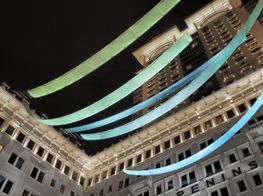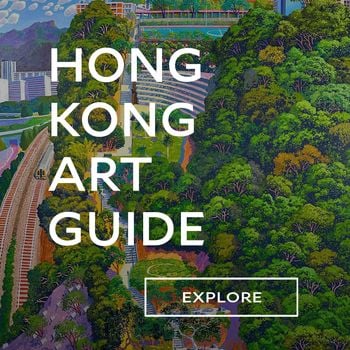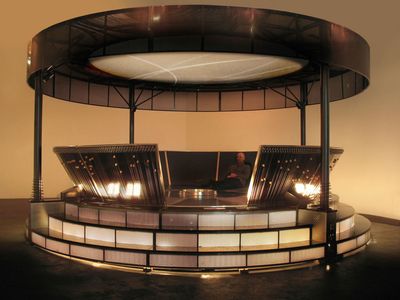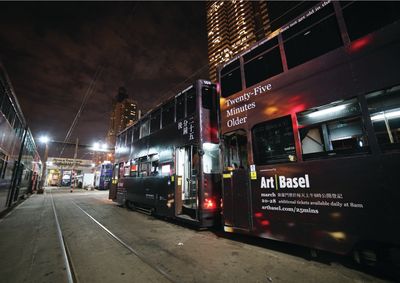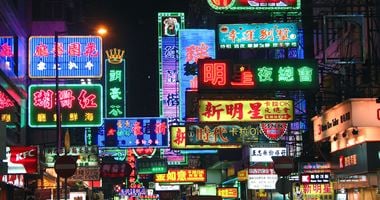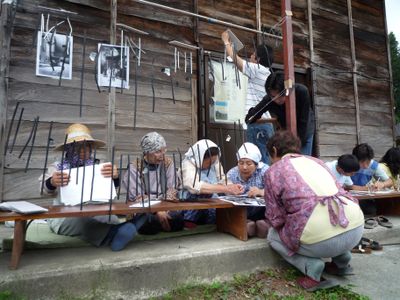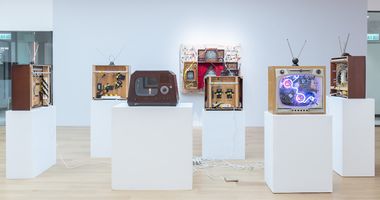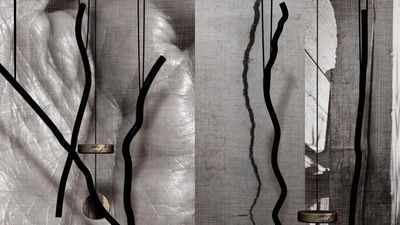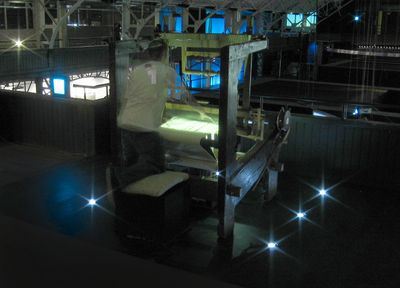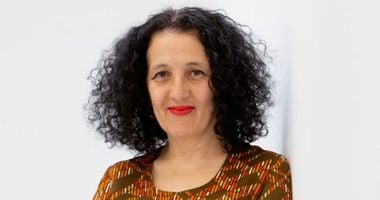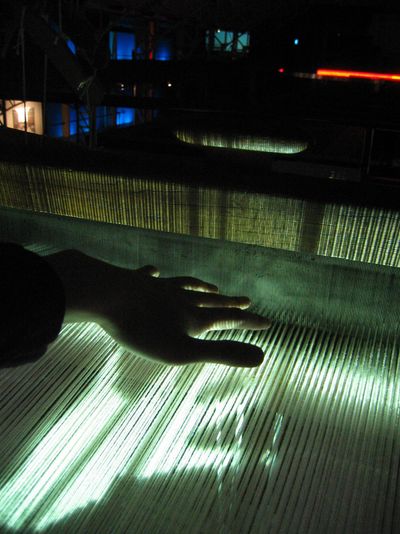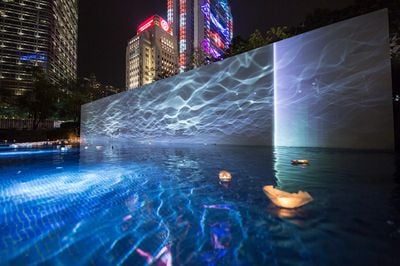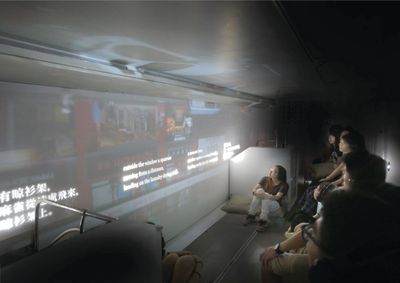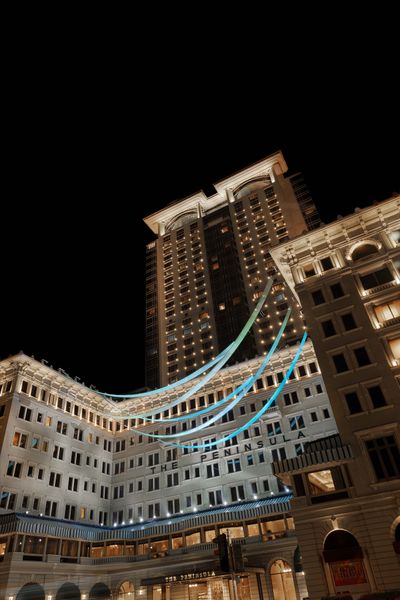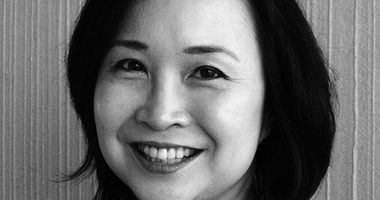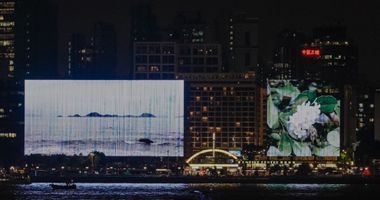Kingsley Ng: ‘My role is to identify existing energies and activate them’
Kingsley Ng. Courtesy The Peninsula, Hong Kong.
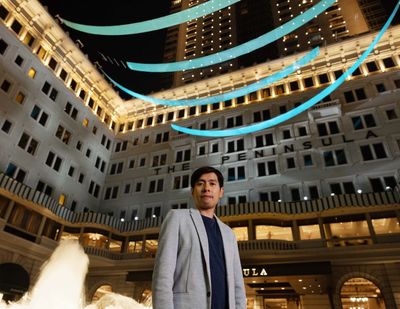
Kingsley Ng. Courtesy The Peninsula, Hong Kong.
Kingsley Ng describes how watching an ice cube melt as a child was likely his first encounter with transience and impermanence, two concepts that inform his practice.
Ng is known for his site-specific, participatory projects that provoke a reconsideration of surrounding environments and social structures. In 2005, he produced his breakthrough work Musical Loom, an 18th-century loom transformed into an interactive harp that visitors could play four-tone harmonies on by hovering their hands over its strings.
Conceived during the artist's time at Le Fresnoy, the National Studio for Contemporary Arts in France where he studied under the likes of Jean-Luc Godard and Gary Hill, Musical Loom pays homage to the region's textile production and industrial history. Notable for its technological innovation, the piece became a conduit for interaction. It was Ng's first work to be shown on international stages, exhibited at IRCAM at the Centre Pompidou in Paris, the Shanghai World Expo, and the Museum of Contemporary Art of Rome.
Three years later, Ng created Musical Wheel (2008), a six-metre-wide rotational ring which audiences could sit inside while it turned. On the ring, nine curved wooden soundboards are mounted with hundreds of strings. As the boards turn, the strings create ambient music from the wheel's four sides, engaging the history of the Kwun Tong district—Hong Kong's earliest industrial quarter—where it resides. Ng described the orchestral tune of the district, saying, '[Daily], there are men repairing car wheels, people pushing trolleys, forklifts transporting goods, ventilation fans humming . . . This collective rotational energy of the working class becomes [an] essence of the work.'
In 2017, Ng was commissioned by Art Basel to produce the experimental public art project, Twenty-Five Minutes Older, where he converted two of Hong Kong's trams into moving camera obscuras, portraying an altered reality that allowed commuters to experience the city in reverse.
Ng's latest commission, unveiled just prior to the opening of Art Basel in Hong Kong, also seeks to engage the city and its inhabitants. Commissioned as part of The Peninsula Hotels' 'Art in Resonance' programme, which was launched in 2019, Esmeralda (2024) occupies the Kowloon hotel's iconic façade, linking to other commissions presented within the hotel: Lachlan Turczan's liquid kinetic sculpture, Harmonic Resonance, Saya Woolfalk's meditative Visionary Reality Portal, and Elise Morin's glittering sculpture, SOLI, made from thousands of crushed CDs.
Ng's floating installation comprises lengths of green ribbon that extend over the hotel's entrance, appearing to ebb and flow with the wind due to motorised winches. Akin to the other works in the programme—which is curated by Bettina Prentice and Isolde Brielmaier—it is both poetic and a feat of engineering. The title for Ng's work is taken from Italo Calvino's celebrated novel Invisible Cities (1972), a meditation on memory, truth, and the relationship between past and present. In the novel, Marco Polo describes the watery city of Esmeralda where routes are infinite. Similarly, Ng describes his kinetic work as aiming to connect with the flow of nearby water that has carried passing travellers.
On the opening night, Esmeralda was accompanied by Arvo Pärt's musical composition, 'Spiegel im Spiegel' (1978), which is also available across digital channels throughout the exhibition period.
In the following conversation, Ng discusses his early influences, his interest in site-specificity, and the influence of music and literature, and offers advice for art students.
ADTell me about how you came to be an artist. Was there something specific that triggered your desire to follow this path?
KNI had never really thought about becoming an artist, but learning about art has been a lifelong pursuit. A significant influence was my grandfather, who held art in high regard. He emphasised the art of living. From a young age, he would impart wisdom through seemingly simple tasks, like teaching us how to hold chopsticks with precision, equating it to a form of art. We had to practice with peanuts and later marbles.
When he drove us around for excursions, he would say something like the 'art' of driving is when you are conscious about the comfort of your passengers and let them feel at ease; he told us proverbs like 'life is like a piece of white paper'. He did not elaborate on what art is, but I had a feeling that it was something mysterious, intangible—something to be discovered.
In my artistic practice, particularly in site-specific works, I see parallels to this notion of 'light-touch' intervention.
Sadly, he passed away when I was still young. Around that time, I attended A.Y. Jackson Secondary School in Canada, named after the painter and founding member of the Group of Seven. There, I encountered exceptional art teachers who introduced me to modern and contemporary art.
I became fascinated by avantgarde artists like John Cage and Nam June Paik, whose forward-thinking approaches often drew inspiration from Eastern philosophies. These experiences prompted me to delve deeper into the abstract notions I had encountered in childhood, shaping my understanding of art not just as expression, but as a conduit to awareness and sensibility.
ADYou received your BFA in New Media Art from Ryerson University of Canada (now Toronto Metropolitan University). You also received a Master of Science in Advanced Sustainable Design from University of Edinburgh. How do you approach sustainability in relation to your art practice?
KNPrior to pursuing my graduate studies, I had the privilege of participating in the Echigo-Tsumari Art Triennial in Japan in 2009. This experience proved instrumental in shaping my understanding of the interconnectedness of humanity and nature.
Working in a rural village in Niigata, renowned for its terraced rice paddies and heavy snowfall, provided invaluable insights into how local communities navigate this intricate relationship. The festival itself curated art projects as 'guiding lights', illuminating century-old wisdom that underscores this symbiosis.
Sustainability, to me, embodies an invisible energy that perpetuates and revitalises itself.
Inspired by this profound experience, I felt compelled to deepen my knowledge and enrolled in a programme in sustainable design at University of Edinburgh. There, I had the opportunity to situate my artistic practice within theoretical frameworks.
During my studies, I became captivated by the concept of urban acupuncture, championed by figures like [Brazilian architect and politician] Jaime Lerner. This approach advocates for subtle interventions in city planning, akin to applying a gentle touch to unblock energy pathways for natural rejuvenation.
In my artistic practice, particularly in site-specific works, I see parallels to this notion of 'light-touch' intervention. Sustainability, to me, embodies an invisible energy that perpetuates and revitalises itself. This energy emanates not from the art itself, but from the interactions between people, places, and nature. My role as an artist is to identify and stimulate these existing meridians, activating them to flourish and evolve naturally.
ADYou have also studied at Le Fresnoy – National Studio for Contemporary Arts in France, where you obtained a postgraduate diploma with the highest honours. How did this time influence your practice and the work you make today?
KNMy time at Le Fresnoy was truly transformative. The opportunity to engage with renowned artists such as Alain Fleischer, Gary Hill, Jean-Luc Godard, Atau Tanaka, Charles Sandison, and Andrea Cera through master classes was invaluable.
In 2004, Lille, alongside Genoa in Italy, was designated as the cultural capital of Europe. Near Lille Metropole, spending time at Le Fresnoy provided a unique vantage point to witness the dynamics of art and culture in urban revitalisation and development.
One memorable project we hosted involved collaborating with 40 children to create drawings reflecting their experiences with the cultural capital's events. These drawings were then used as wrapping paper for baguettes, distributed from four local bakeries. Reflecting on this, I reckoned the profound impact of art in nurturing relationships with places and communities.
ADIn 2005, you created the interactive installation Musical Loom, where you transformed a 250-year-old weaving machine into a musical instrument. This has been defined as a breakthrough work for you. How did the concept come about?
KNMusical Loom stands as a pivotal moment in my artistic journey. It is my first work to be shown on international stages, from Ircam – Centre Pompidou in Paris, to the Shanghai Expo, Museum of Contemporary Art of Rome, and Hong Kong Museum of Art.
Conceived during my time at Le Fresnoy, the genesis of Musical Loom lies in the region's rich textile heritage. Once a hub of French textile production and a cornerstone of the Industrial Revolution, the area surrounding Le Fresnoy bears witness to a storied past. It was within this historical context that I acquired an 18th-century loom from the Jacquard Museum of France, a tangible relic of a bygone era.
I question whether it is possible for urban media art to offer something beyond mere spectacle, something rather to reactivate our sensitivity.
The work emerged as a homage to the region's industrial history. This antique loom became more than a relic; it became a conduit for interaction, weaving together light and sound through the delicate movements of hand gestures. Like a harp, the loom responds to touch, allowing users to manipulate a four-tone harmony and modulate its volume, yielding a symphony of mechanical sounds and musical expressions.
What is most resounding with Musical Loom is not in its technical innovation but its ability to evoke a sense of nostalgia and connection. As locals engaged with the installation, they infused it with their own melodies, their fingers tracing the echoes of triumphs and tribulations woven within the loom's timeworn threads.
ADBetween 2005 and today, what do you see as the single most important development in how you approach the art you make?
KNI was intrigued by the Taoist tale of 'The Taming of the Harp'. The story follows Peiwoh the harpist, who reveals the secret to playing a magical harp: 'Others have failed because they sang but of themselves. I left the harp to choose its theme and knew not truly whether the harp had been Peiwoh or Peiwoh were the harp.'
This story resonates deeply with me, and led me to examine my artistic practice through a similar lens. A lot of training in art schools emphasises personal expression. I am rather interested in amplifying the voice of what I work on and work with.
For The Peninsula Hotels project, seeing the hotel as a witness to a century's worth of history, I wondered: What stories would it choose to tell? When conceiving the work, I saw myself as a mediator, amplifying the voice of the venerable 'Grande Dame of the Far East' [The Peninsula Hong Kong].
ADEsmeralda is the title of the work you have created for the façade of The Peninsula Hong Kong. When you were first invited by Isolde and Bettina for the commission, what was the first thing you set about doing to formulate the concept?
KNThe commission was an immensely humbling opportunity, particularly considering the roster of celebrated international artists who had contributed to the hotel's artistic legacy, including luminaries such as Tracey Emin, Richard Wilson, Michael Craig-Martin, and Janet Echelman.
Initially, discussions revolved around a new rendition of an earlier work, Over the Ocean (2017), for display at the fountain outside the hotel's entrance. However, the frequent vehicular traffic makes the location unsuitable for an interactive installation.
However, the ocean persisted as an essential theme. The curators encouraged me to explore particularly the space above the fountain. This was a pivotal point of the conceptual development.
ADIn 2017, you also created a fantastic interactive work for Art Basel in Hong Kong, commissioned by the fair. Twenty-Five Minutes Older comprised a mobile installation, transforming two of Hong Kong's iconic public trams into moving camera obscuras, inviting audiences to experience Hong Kong—in reverse. Did anything from the experience of creating that work inform how you approached Esmeralda?
KNTwenty-Five Minutes Older and Esmeralda represent distinct artistic endeavours—the former is characterised by its experiential nature, while the latter exudes a sense of tranquillity and invites contemplation. However, both projects explore urban media art.
In our contemporary world, inundated by a ceaseless barrage of sensory stimuli, I question whether it is possible for urban media art to offer something beyond mere spectacle, something rather to reactivate our sensitivity. While Twenty-Five Minutes Older engaged audiences in an experiential chamber, Esmeralda encourages serene introspection amid the urban hustle.
Thus, while the projects may differ in their execution, they both stem from a shared inquiry into expanding alternative approaches to urban media art.
ADEsmeralda takes its title from Italo Calvino's celebrated 1972 novel Invisible Cities. Tell me about this novel. Why is it important to you and how does it relate to this work?
KNInvisible Cities is a literary masterpiece that intertwines themes of travel and imagination. It fictionalises Marco Polo's descriptions of the cities he traversed on his journey from Venice to the Far East for Kublai Khan [grandson of Genghis Khan].
The Peninsula Hong Kong, which overlooks both the harbour and the former railway station, symbolises a gateway connecting the East and West. When conceptualising my work for this iconic site, Invisible Cities immediately came to mind.
In the novel, there is a city named Esmeralda, where pathways, both on land and water, extend infinitely. A few lines particularly struck me: 'It is more difficult to fix on the map the routes of the swallows, who cut the air over the roofs, dropping long invisible parabolas with their still wings...' This emerges as imagery for the work.
Flowing between the physics of gravity and the buoyancy of air, the kinetic installation contemplates the tides that have carried the voyages of visitors and the place itself. It is ephemeral yet far-reaching at the same time.
ADMany of your works seem to make literary or cultural references. I am thinking of Secret Garden and After the Deluge (both 2018). Can you discuss the relationship between your practice and writing? Why reference other works of culture in your titles?
KNI deeply admire individuals who possess skills and talents beyond my own, particularly writers. Their ability to distil complex ideas and imagery into a few words never fails to astound me. By incorporating literary references into my titles, it is my humble homage to these artists.
My practice embraces a minimalistic aesthetic and a 'reductionist' approach, which aligns closely with poetry. Poetry conveys vast concepts with concision.
Moreover, referencing other cultural works in my titles serves to evoke a rich tapestry of associations and interpretations. Just as literature invites readers to immerse themselves in their imagination, these cultural references invite viewers to explore the depths of their own associations, enriching their engagement with the work.
Additionally, I am grateful to have the privilege to work with writer Stephanie Cheung on many of these projects. Her insightful suggestions on literature and writing have been invaluable.
ADEsmeralda is a jade-coloured fabric installation. Why jade and fabric?
KN'Esmeralda' refers to the gemstone emerald. In Chinese, the word 'emerald' is sometimes translated as feicui, which also means jade. Notwithstanding the confusion, I think the double meaning is intriguing.
On one hand, both gems are deeply ingrained in history and carry cultural symbolism. On the other, their shared colour evokes the watery city depicted in Calvino's narrative. The Chinese origin of the word feicui is also associated with the feathers of the kingfisher bird.
Likewise, the choice of fabric as the primary material lends a sense of fluidity and translucency, mirroring the ethereal essence of water, movement and flight, and the image of Esmeralda it seeks to embody.
ADI understand the work will be kinetic. Tell me about the kinetic aspect.
KNKinetics are integral to the installation. Spanning an impressive 45 metres in length and rising 20 metres high, the essence of the piece is movement.
The gigantic ribbons that make up the piece are individually controlled by motorised winches, creating a captivating interplay between ascent and descent, buoyancy and gravity. This orchestrated choreography is influenced by wind currents, so there is a sense of organic fluidity and an ever-changing form.
ADWhat has been the biggest challenge in bringing this work into existence?
KNThere were many technical challenges. We made a good number of scaled models and simulations, both virtual and physical. One of the most daunting tasks was to create a one-to-one scale demonstration off-site for one unit of the fabric and winch system. Picture this: constructing two truss towers, each a staggering 20 metres tall (equivalent to roughly seven storeys), spanning a space of 50 metres (approximately the length of two basketball courts).
. . . I emphasise the significance of grounding oneself in historical perspectives and learning from the past.
To replicate natural wind conditions, we made use of four towering fans, rented from a film studio specialising in special effects. These fans enabled us to test a myriad of wind conditions. Simultaneously, we implemented real-time monitoring of wind conditions at The Peninsula Hong Kong, cross-referencing our findings with datasets from the Hong Kong Observatory.
This intricate process demanded unwavering precision and collaboration among our exceptional production, engineering, and hotel teams, who valiantly navigated each technical challenge with expertise and dedication.
ADYou have practised as an Associate Professor of the Academy of Visual Arts at Hong Kong Baptist University. What advice can you give students about how to approach art-making?
KNAs the director of the BASc in Arts and Technology programme at Hong Kong Baptist University, I often encounter students who are eager to integrate advanced technologies, such as generative AI into their art-making process.
While staying abreast of new knowledge and technological developments is undoubtedly important, I emphasise the significance of grounding oneself in historical perspectives and learning from the past.
For example, while contemplating the potential impact of generative AI on today's arts, it's invaluable to reflect on how photography influenced art at the turn of the century.
By understanding the evolution of artistic practices over time, students can gain deeper insights into the possibilities and implications of integrating technologies into their creative endeavours. This balanced approach, informed by both contemporary innovation and historical contexts, fosters a more comprehensive and meaningful artistic practice.
ADEarlier, you discussed your grandfather being an influence. Can you recall any other formative experiences?
KNWhen reflecting on what has shaped me, one memory stands out from my kindergarten days when a teacher demonstrated how a cube of ice melts. This simple yet profound phenomenon captivated me, and the image remains etched in my mind.
Looking back, I realise that this experience was likely my first encounter with the concepts of transience and impermanence. This realisation has since become a guiding force in my practice, influencing my exploration of themes related to ephemerality and the passage of time. —[O]

